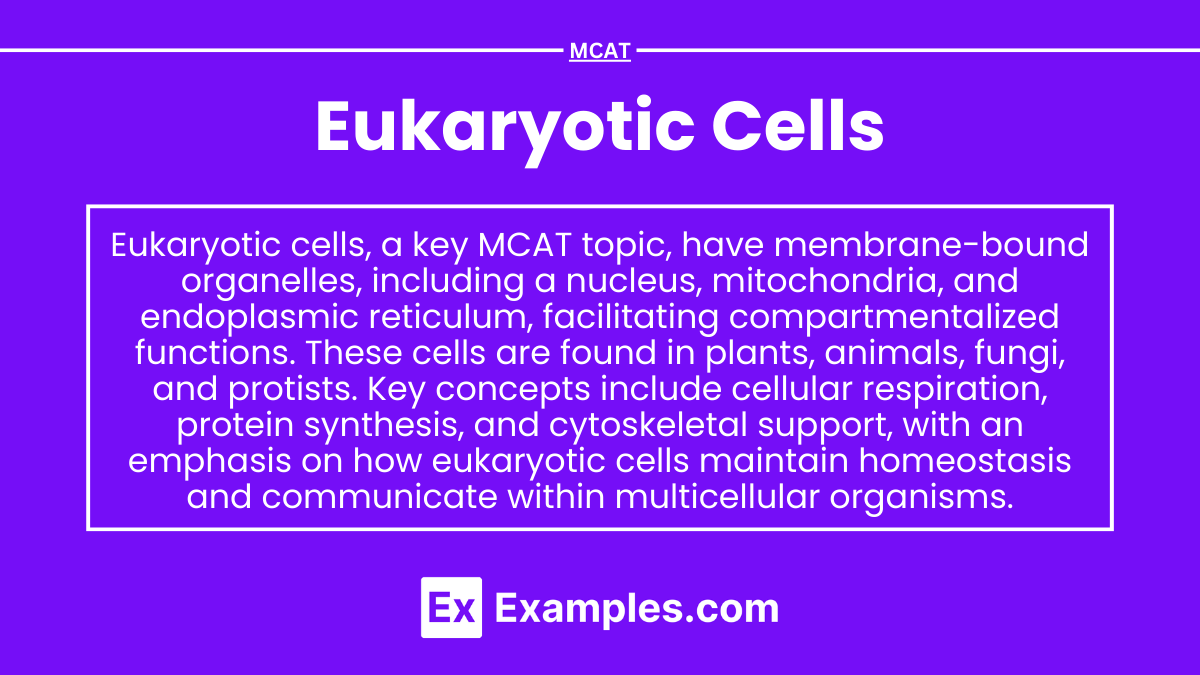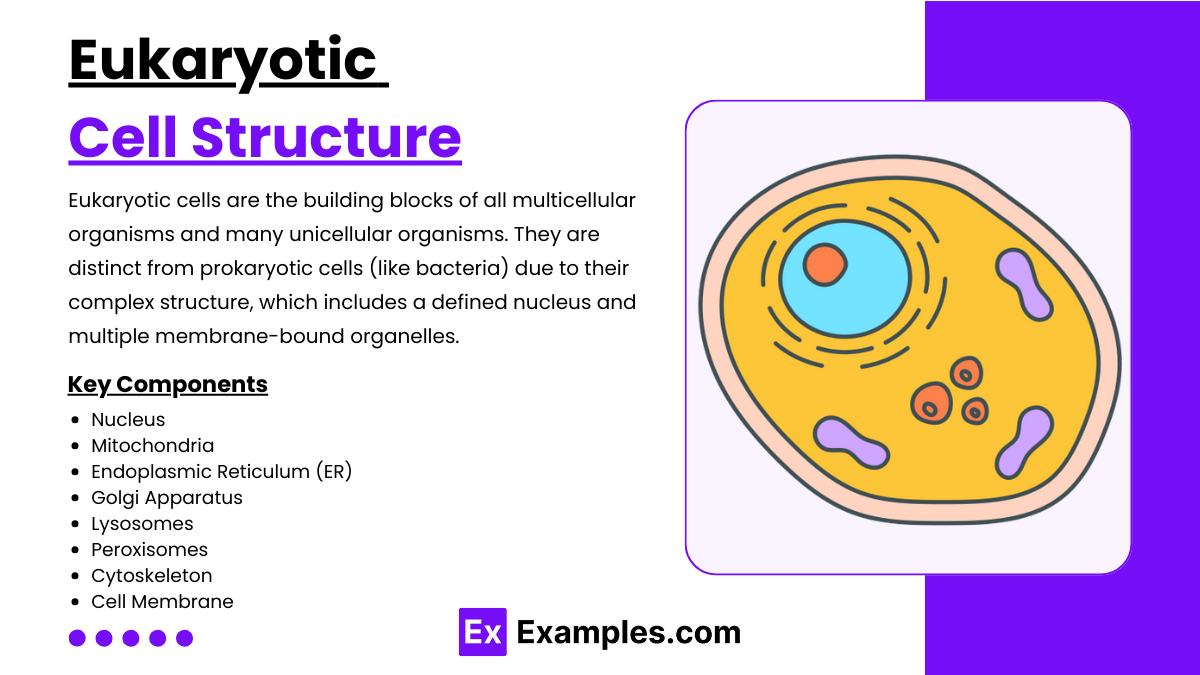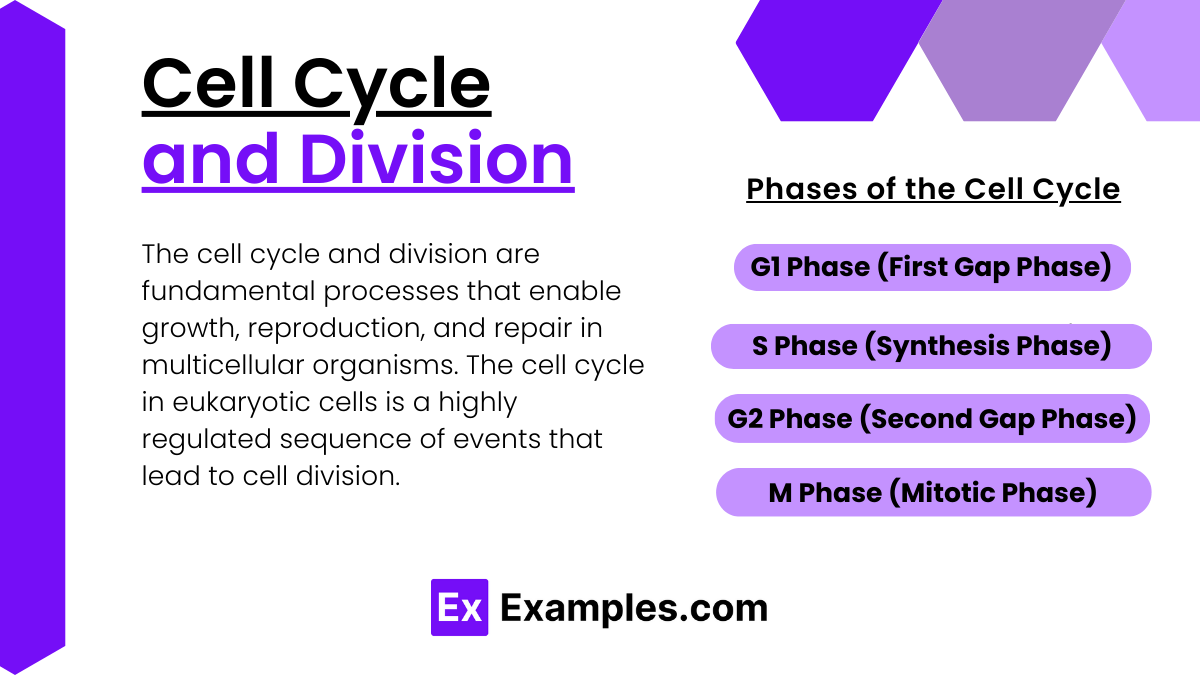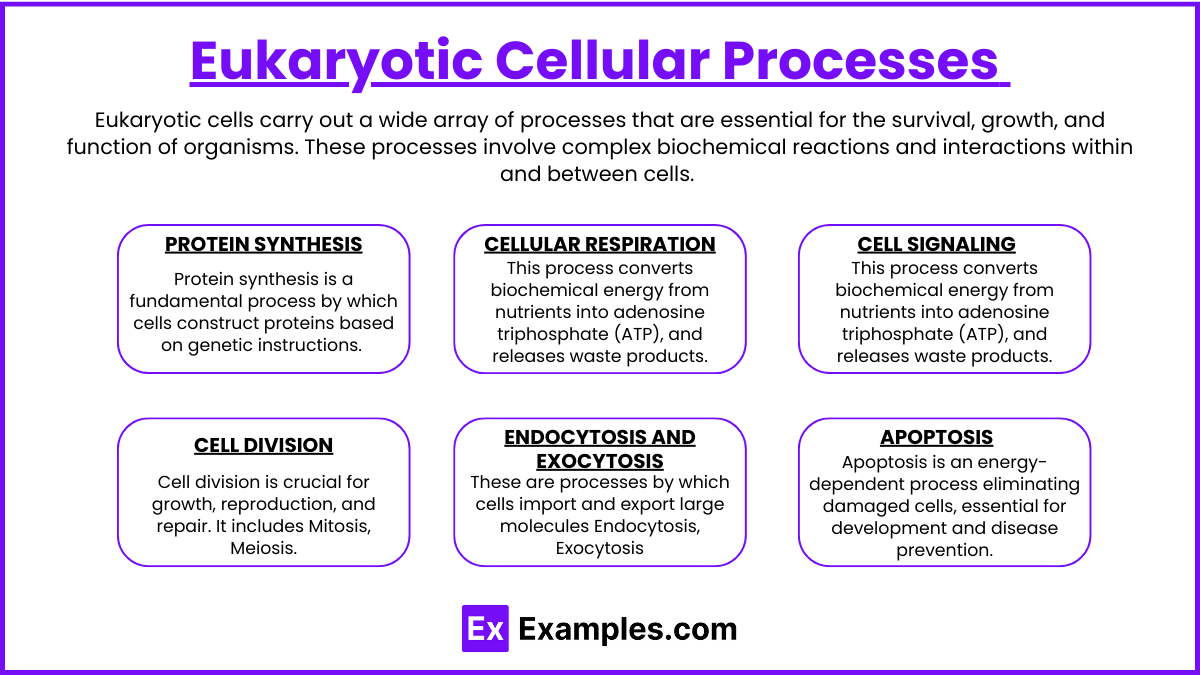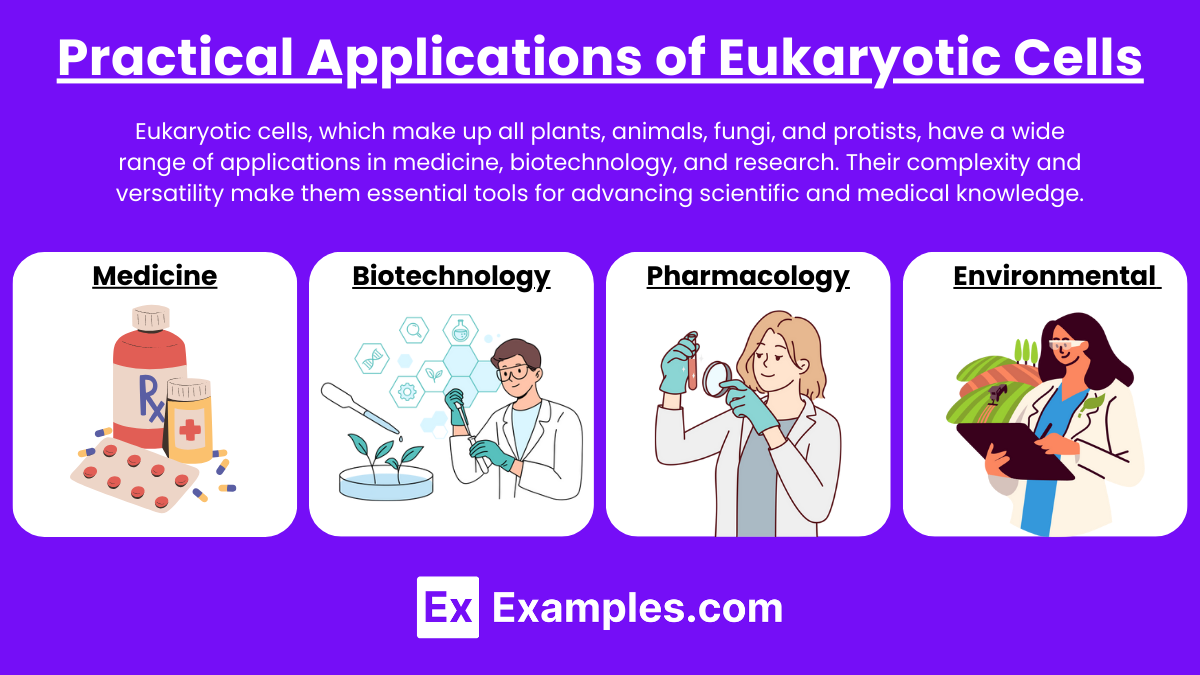Preparing for the MCAT necessitates a thorough understanding of eukaryotic cells, fundamental to the Biological and Biochemical Foundations of Living Systems. Mastery of cell structures, functions, and signaling pathways is vital. This knowledge underpins insights into cellular behavior, interactions, and the complexities of biological systems, essential for a high MCAT score.
Learning Objective
In studying "Eukaryotic Cells" for the MCAT, you should aim to gain a comprehensive understanding of cell components and their functions, such as the nucleus, mitochondria, and endoplasmic reticulum. Delve into the mechanisms of cellular processes like cell cycle regulation, apoptosis, and signal transduction. Explore how eukaryotic cells adapt to various environmental stresses and interact with each other through cell signaling and junctions. Assess how these concepts are pivotal in understanding tissue and organ function. Apply this knowledge to analyze and interpret complex biological scenarios and experimental results in MCAT practice passages, enhancing your preparedness for the exam.
Overview of Eukaryotic Cell Structure
Eukaryotic cells are the building blocks of all multicellular organisms and many unicellular organisms. They are distinct from prokaryotic cells (like bacteria) due to their complex structure, which includes a defined nucleus and multiple membrane-bound organelles. Here are the key components of a eukaryotic cell:
Nucleus: The nucleus is the most prominent organelle, enclosed by a nuclear envelope. It contains chromatin (a complex of DNA and protein) and the nucleolus, where ribosomal RNA synthesis occurs. The nucleus serves as the cell's control center, directing gene expression and mediating the replication of DNA during the cell cycle.
Mitochondria: Often referred to as the cell's powerhouses, mitochondria are organelles that generate most of the cell's supply of adenosine triphosphate (ATP), used as a source of chemical energy. Mitochondria are also involved in other processes such as cell signaling, cellular differentiation, and cell death, as well as maintaining control of the cell cycle and cell growth.
Endoplasmic Reticulum (ER): The ER is a network of tubular membranes within the cytoplasm of the cell, involved in the synthesis, folding, modification, and transport of proteins and lipids. The rough ER is studded with ribosomes and is involved in protein synthesis, whereas the smooth ER is involved in lipid synthesis and detoxification processes.
Golgi Apparatus: The Golgi apparatus functions as a factory in which proteins received from the ER are further processed and sorted for transport to their eventual destinations: secretion, plasma membrane incorporation, or lysosomes.
Lysosomes: These are membrane-bound organelles containing digestive enzymes. They break down excess or worn-out cell parts as well as substances ingested by the cell. They are also involved in apoptosis, the process of programmed cell death.
Peroxisomes: Organelles that contain enzymes for oxidizing fatty acids and amino acids, and detoxifying harmful substances, producing hydrogen peroxide as a by-product, which is then converted to water.
Cytoskeleton: The cytoskeleton is a network of fibers that organizes other constituents of the cell, maintains the cell's shape, anchors organelles in place, and enables cell movement. It includes structures like microfilaments, intermediate filaments, and microtubules.
Cell Membrane: A double lipid layer that surrounds the cell, the plasma membrane acts as a selective barrier that allows only specific substances to enter or exit the cell, helping to maintain the cell's internal environment and enable communication with its surroundings.
Cell Cycle and Division
The cell cycle and division are fundamental processes that enable growth, reproduction, and repair in multicellular organisms. The cell cycle in eukaryotic cells is a highly regulated sequence of events that lead to cell division. This cycle is divided into distinct phases, each critical for the proper duplication and division of cellular contents.
Phases of the Cell Cycle:
G1 Phase (First Gap Phase):
This is the phase of cellular growth and activity where the cell increases in size and synthesizes various enzymes and nutrients needed for DNA replication.
The cell assesses conditions to decide whether to enter the next phase (S phase) or enter a resting state known as G0.
S Phase (Synthesis Phase):
DNA replication occurs during this phase. Each chromosome duplicates itself to ensure that each new cell will have an identical set of chromosomes.
The cell also duplicates centrosomes during this phase, which will play a crucial role in mitotic spindle formation during cell division.
G2 Phase (Second Gap Phase):
The cell continues to grow and produces new proteins and organelles.
It undergoes final preparations for mitosis, checking for any errors in the DNA after replication and making necessary repairs.
M Phase (Mitotic Phase):
This phase encompasses both mitosis and cytokinesis. Mitosis is further divided into several stages:
Prophase: Chromosomes condense and become visible. The nuclear envelope breaks down, and the mitotic spindle begins to form.
Metaphase: Chromosomes align at the cell's equatorial plate, facilitated by the spindle fibers.
Anaphase: Sister chromatids (now individual chromosomes) are pulled apart and move to opposite poles of the cell.
Telophase: Chromosomes begin to decondense, nuclear envelopes re-form around the two sets of chromosomes at each pole, and the spindle fibers disintegrate.
Cytokinesis: The cytoplasm divides, leading to the formation of two separate daughter cells, each with a complete set of chromosomes and organelles.
Cellular Processes
Eukaryotic cells carry out a wide array of processes that are essential for the survival, growth, and function of organisms. These processes involve complex biochemical reactions and interactions within and between cells. Below are some key cellular processes and their functions:
1. Protein Synthesis
Protein synthesis is a fundamental process by which cells construct proteins based on genetic instructions. This involves two main stages:
Transcription: DNA is used as a template to synthesize messenger RNA (mRNA) in the nucleus.
Translation: mRNA is transported to the ribosomes in the cytoplasm, where it guides the assembly of amino acids into proteins.
2. Cellular Respiration
This process converts biochemical energy from nutrients into adenosine triphosphate (ATP), and releases waste products. There are three main stages:
Glycolysis: Glucose is broken down in the cytoplasm into molecules of pyruvate, yielding energy.
Citric Acid Cycle (Krebs Cycle): Pyruvate is transported into mitochondria and further broken down, which generates electron carriers for the next stage.
Oxidative Phosphorylation: Electrons are transferred through a series of proteins in the mitochondrial membrane, driving the production of ATP.
3. Cell Signaling
Cell signaling allows cells to process information from their environment and communicate with other cells. It involves:
Receptors: Proteins on the cell surface or inside the cell that bind to signaling molecules.
Signal Transduction Pathways: Cascades of molecular interactions that amplify and specify the signal.
Responses: Changes in gene expression, enzyme activity, or cell behavior.
4. Cell Division
Cell division is crucial for growth, reproduction, and repair. It includes:
Mitosis: Division of the nucleus that results in two genetically identical daughter cells.
Meiosis: Specialized form of cell division that produces reproductive cells (gametes) with half the usual number of chromosomes.
5. Endocytosis and Exocytosis
These are processes by which cells import and export large molecules:
Endocytosis: The cell membrane engulfs external materials, forming a vesicle.
Exocytosis: Vesicles within the cell fuse with the cell membrane to release their contents outside the cell.
6. Apoptosis (Programmed Cell Death)
Apoptosis is a controlled and energy-dependent process by which unnecessary or damaged cells are eliminated, playing a key role in development and disease prevention.
Practical Applications
Eukaryotic cells, which make up all plants, animals, fungi, and protists, have a wide range of applications in medicine, biotechnology, and research. Their complexity and versatility make them essential tools for advancing scientific and medical knowledge. Here are the main practical applications:
Medicine:
Cancer Treatment: Therapies that target specific cell signaling pathways to inhibit tumor growth.
Regenerative Medicine: Stem cell and tissue engineering for repairing or replacing damaged organs and tissues.
Biotechnology:
Genetic Engineering: Modifying the genetic structure of organisms for improved traits, such as disease resistance in crops or production of pharmaceuticals in bacteria.
Protein Production: Using cells to produce proteins for vaccines and enzymes for industrial processes.
Pharmacology:
Drug Development: Screening and development of new drugs that target specific cellular mechanisms.
Personalized Medicine: Tailoring treatments based on individual genetic and cellular profiles to optimize efficacy and minimize side effects.
Environmental Science:
Bioremediation: Utilizing microorganisms to degrade environmental pollutants.
Biosensors: Developing biological components that detect environmental toxins or pathogens.
Examples
Examples 1: Fluorescence Microscopy in Studying Cell Structures
Using fluorescence microscopy to observe the dynamic changes in the cytoskeleton during cell division, highlighting the organization and reorganization of actin filaments and microtubules.
Examples 2: Mitochondrial Function in Energy Production
A cell's energy demands increase during exercise, leading to an upregulation in mitochondrial ATP production through oxidative phosphorylation. Understanding this process helps explain tissue responses under stress and disease conditions like mitochondrial myopathies.
Examples 3: Cell Cycle Regulation in Cancer
Mutations in genes that regulate the cell cycle, such as p53 (a tumor suppressor gene), can lead to uncontrolled cell proliferation, a hallmark of cancer. This example is crucial for understanding oncogenesis and the development of therapeutic targets.
Examples 4: Apoptosis in Developmental Biology
Apoptosis is essential for proper development, such as in digit formation in the developing embryo where cells between digits undergo programmed cell death to separate fingers and toes. This process illustrates apoptosis's role in morphological shaping and organ development.
Examples 5: Signal Transduction Pathways in Hormone Response
The binding of adrenaline to its receptor on liver cells activates a signal transduction cascade that results in the breakdown of glycogen into glucose. This response mechanism is vital for understanding how cells react to hormonal signals and maintain homeostasis.
Practice Questions:
Question 1
What organelle is known as the "powerhouse of the cell" due to its role in ATP production?
A) Golgi apparatus
B) Nucleus
C) Mitochondria
D) Endoplasmic reticulum
Answer: C) Mitochondria
Explanation:
Mitochondria are often referred to as the "powerhouse of the cell" because they generate most of the cell's supply of adenosine triphosphate (ATP), used as a source of chemical energy. Through the process of oxidative phosphorylation, mitochondria convert energy from nutrients into ATP, making them critical for energy production in eukaryotic cells.
Question 2
Which phase of the cell cycle is characterized by the replication of DNA?
A) G1 phase
B) S phase
C) G2 phase
D) M phase
Answer: B) S phase
Explanation:
The S phase (synthesis phase) of the cell cycle is characterized by DNA replication, where each chromosome's DNA molecule is duplicated. This is crucial for preparing the cell for mitosis, ensuring that each daughter cell receives an identical set of chromosomes.
Question 3
Which cellular structure is responsible for modifying, sorting, and packaging proteins and lipids for secretion or use within the cell?
A) Lysosomes
B) Golgi apparatus
C) Ribosomes
D) Peroxisomes
Answer: B) Golgi apparatus
Explanation:
The Golgi apparatus is an organelle that plays a central role in the trafficking of proteins and lipids within the cell. It modifies proteins and lipids that have been built in the endoplasmic reticulum and prepares them for export outside of the cell or for trafficking to various locations inside the cell. This process includes the addition of signal sequences that direct the delivery of the molecules.

